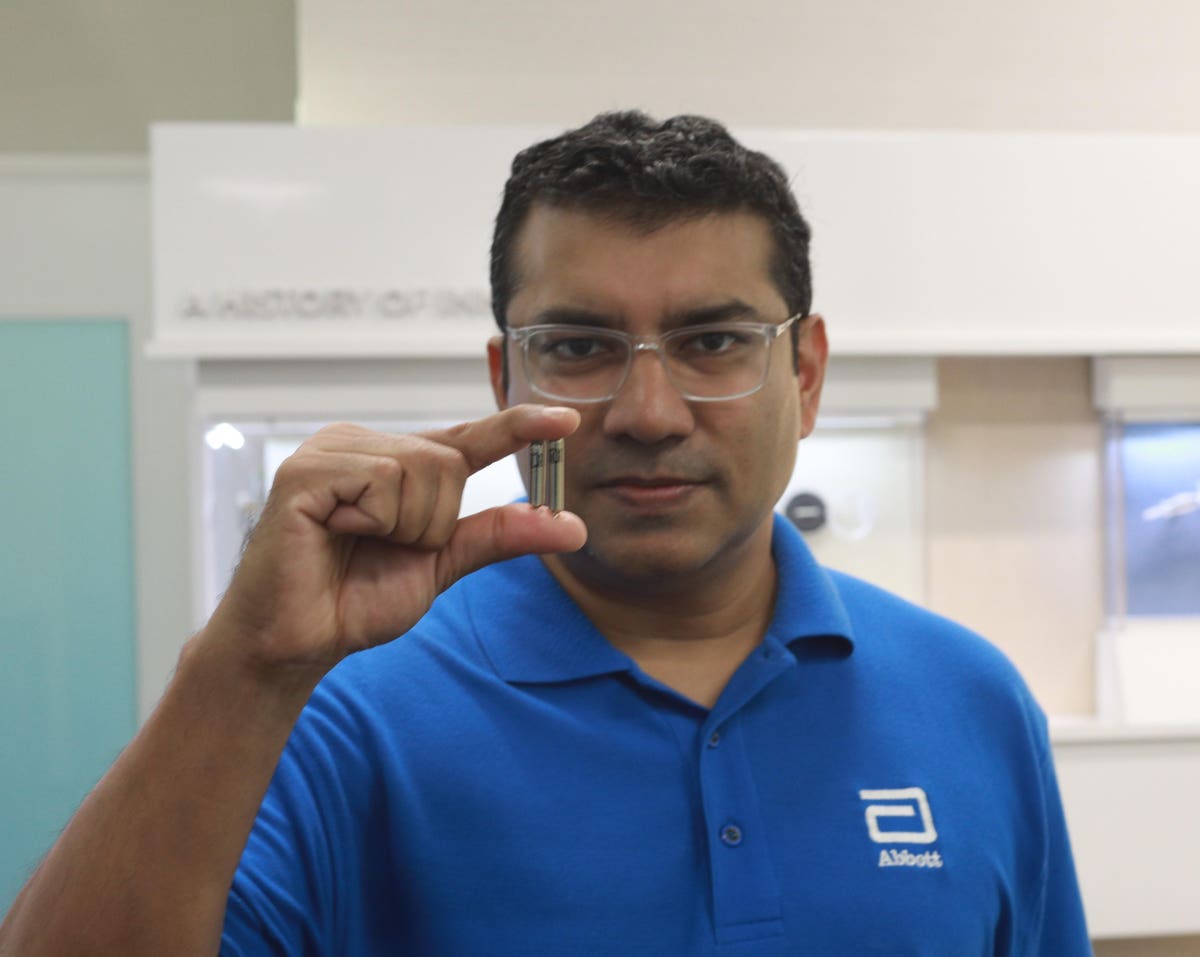On Wednesday, medtech giant Abbott announced that its new leadless pacemaker system, Aveir DR, has been approved by the FDA. This is the first time the FDA has given a thumbs up to a device of this type for two different chambers of the heart, which opens up this technology to nearly any patient who needs a pacemaker.
“From a clinical perspective, we know that leadless pacing offers a number of important advantages to patients in terms of getting away from the complications related to traditional pacemakers,” says Leonard Ganz, a cardiologist and Abbot’s chief medical officer for cardiac rhythm management. “This will expand the number of patients who can benefit from leadless pacing, many, manyfold,” he tells Forbes.
Over a million new patients worldwide get a new pacemaker every year, the vast majority of which are traditional implantable pacemakers, the basic architecture of which hasn’t changed much since their invention in the 1950s. These pacemakers depend on “leads” – electric wires that connect to the heart – delivering electric shots as needed to ensure a patient’s heart beats with an appropriate rhythm.
Although pacemakers have been life-changing for millions of people, they do carry downsides, explains Ganz, in particular risk of infection both from the surgical procedure needed to implant them as well as the leads themselves should their insulation become compromised. Leadless pacemakers, by contrast are much smaller, don’t require surgical implantation and have no wires connected to the heart. Instead, they are injected using a catheter in a vein and placed directly in the heart in a way that allows for removal if need be. All of these factors significantly reduce the risk of complications.
The first leadless pacemaker, manufactured by Medtronic, was cleared by the FDA in 2016. Abbott’s first leadless pacemaker, the Aveir VR, was approved by the FDA in March 2022. Both of these products, however, only work in a single chamber of the heart. About 80% of the patients that require a pacemaker need shocks in two cardiac chambers in order to keep the desired heart rhythm.
The challenge to get leadless pacemakers to work for these patients is a question of synchronization – how can the device ensure its delivering a shock in the right chamber at the right time? This isn’t an issue with traditional pacemakers, because the two leads are connected to a single device, but it is with a leadless pacemaker, because there needs to be one device in each chamber. But the challenge with wireless communication with these tiny pacemakers is that solutions like Bluetooth eat up a lot of battery, drastically shortening the lifespan of the devices.
Abbott engineers solved this with a proprietary system the company markets as “i2i.” The communication system works by transmitting high frequency electric pulses that take advantage of the electric conductivity of blood to deliver the signal. “So with this incredibly efficient, conducted telemetry, we can get reasonable battery longevity ease, despite the fact that the devices are tiny, and they’re communicating with each other within every heartbeat,” explains Ganz.
In Abbott’s clinical trial for the Aveir DR pacemaker, the results for which were published in the New England Journal of Medicine, 295 patients were implanted with the device. The goals for the study in terms of both safety and efficacy were exceeded by large margins. In particular, over 97% of the patients had both chambers of their heart beating normally after three months – the goal of the study was to achieve this in at least 82% of them.
“What’s amazing about this is the ability for the two devices, the one in the top and bottom chambers, to communicate with each other,” says Vivek Reddy, an author of the study and electrophysiologist at Mt. Sinai whose lab receives grant support from Abbott. Another aspect of the clinical study he highlights is that there was only one patient who experienced a serious complication in implanting the device out of the 295 patients. Only 8 patients (less than 3%) had a complication requiring a subsequent procedure and 85% of the patients had zero complications (the study’s goal was 78%). “It’s very safe,” he says.
For Ganz, who treated heart patients for 25 years before assuming his current role at Abbott last year, the major benefit of this new technology is that it makes life vastly easier for patients: It can be implanted without leaving a tell-tale scar and recovery after implantation is significantly faster than a traditional pacemaker.
“With a leadless pacemaker, there’s no sign to anyone that the patient has a pacemaker,” Ganz says. “From the experience of the person getting the device, it’s really transformative.”
MORE AT FORBES
Read the full article here





